Getting behind the wheel of a car for the first time is a huge milestone in a teen’s life. If you’re a parent, it can also be a nerve-wracking experience watching your child drive away on their own after getting their license. As a parent of two young drivers, attorney Chris DiBella understands the complex mix of pride and worry that parents feel at this pivotal moment.
No one wants to think about their children getting into a crash, but the reality is, these tragedies do happen. At DiBella Law Injury and Accident Lawyers, we have helped many families navigate the steps to take after teen driving accidents. We even conducted surveys comparing what teens say they are doing behind the wheel to what parents perceive their teens to be doing.
Starting a conversation on teen driving safety is the first step toward helping your child avoid collisions. That’s why we’ve built a Teen Driver Safety Checklist to help you initiate this discussion and give your teen the insight they need to make good decisions on the road.
Survey Results: How Do the Risks of Teen Driving Differ Between Teens' Behavior and Parents’ Perception
We surveyed 100 teens, age 16-19, and 100 adults with teens in their household to get a clearer picture of teen driving behavior. We also wanted to understand the difference between parents’ perception and what teens actually do in the car. What we discovered was eye-opening: parents and teens live in two very different realities when it comes to road safety.
First and foremost, 90% of parents think their teen is a safe driver, but they rate other kids, who aren’t their own, much less favorably. Perhaps there is an inherent bias that parents have when evaluating the safety of their own teens. But the numbers don’t lie. When teens report on their own habits, the truth looks very different.
of parents think their teen
is a safe driver
What’s Actually Distracting Teens?
We asked both teens and parents to rank common driving distractions on a scale of 1–5. Here’s what stood out:
- Teens ranked other people in the car as the most distracting.
- Parents, on the other hand, believed general phone use (talking and texting) was the biggest threat.
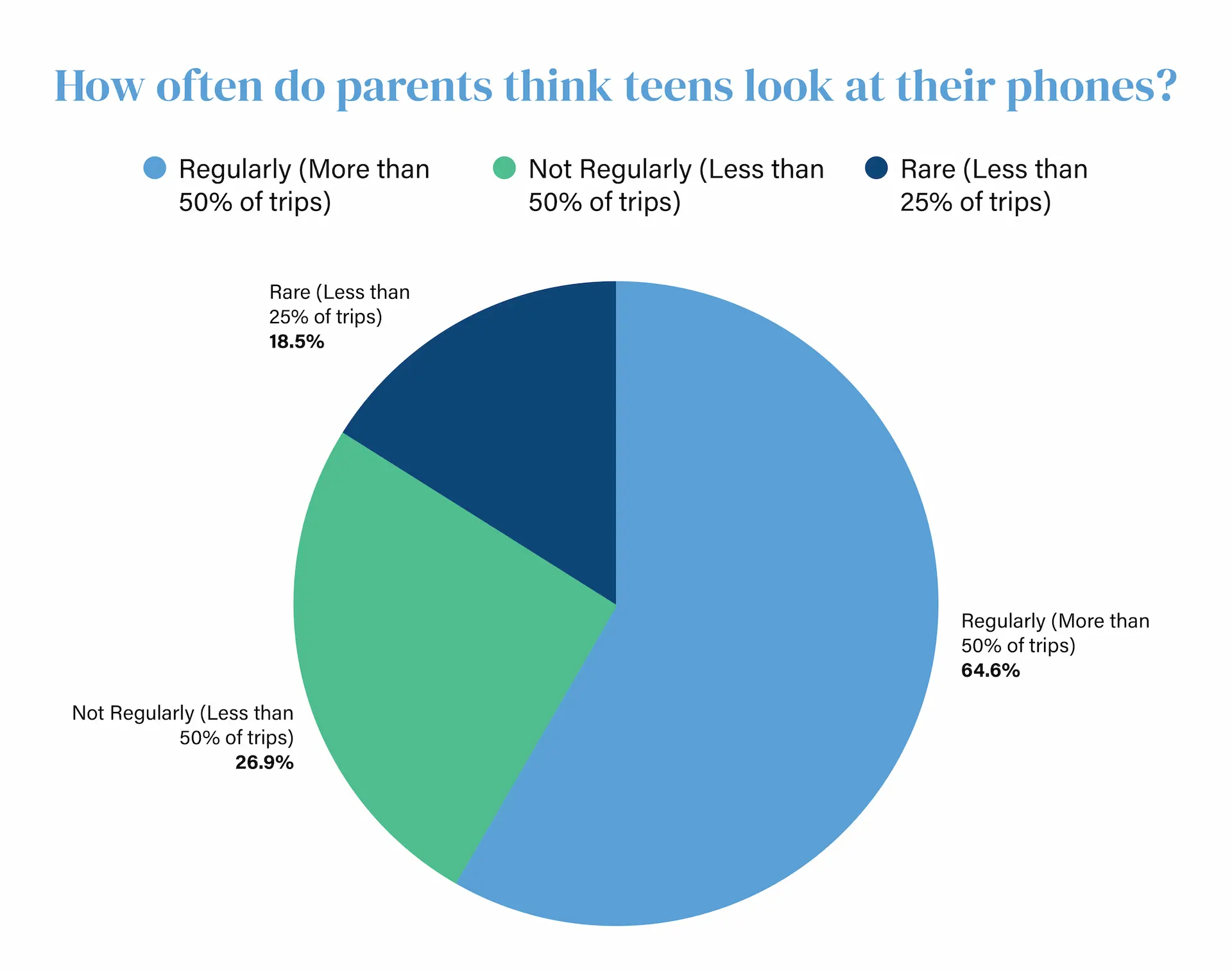
This disconnect matters. If parents underestimate the power of platforms like Instagram, Snapchat, or TikTok, they may not be having the right conversations at home.
One thing parents and teens agree on: phones are distracting. Over 50% of parents believe their teen uses a phone while driving and 46% of teens admitted they have used their phone behind the wheel. That’s nearly half — a sobering figure that confirms this is more than just parental paranoia.
of teens admitted they have used their phone behind the wheel
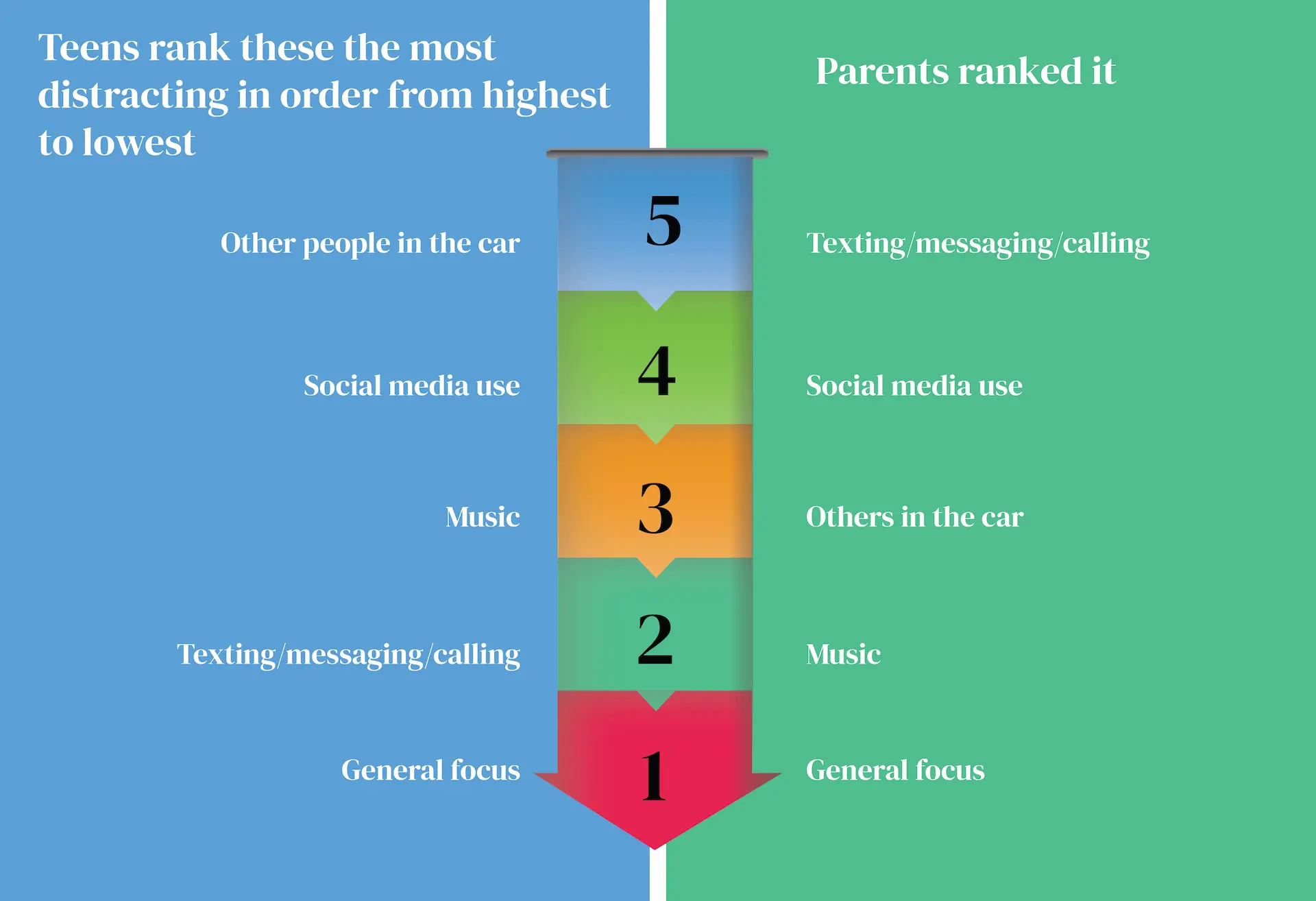
Teens Admit to Risky Driving Habits
When asked directly, 45% of teens said they believe they could be safer drivers. This level of self-awareness presents an opportunity: teens know there’s room for improvement — they just need the tools and support to make better choices.
Here’s a rare bright spot in the data. While 65% of parents believe a significant number of teens drink and drive, an overwhelming 93% of teens report they never do. That’s encouraging — but it doesn’t mean the risk is gone. Even one poor decision can have devastating consequences.
The survey also revealed notable gender differences:
- 22% of male teens admit they’ve driven recklessly to impress their friends.
- 52% of males say they could improve their driving habits, compared to 40% of females.
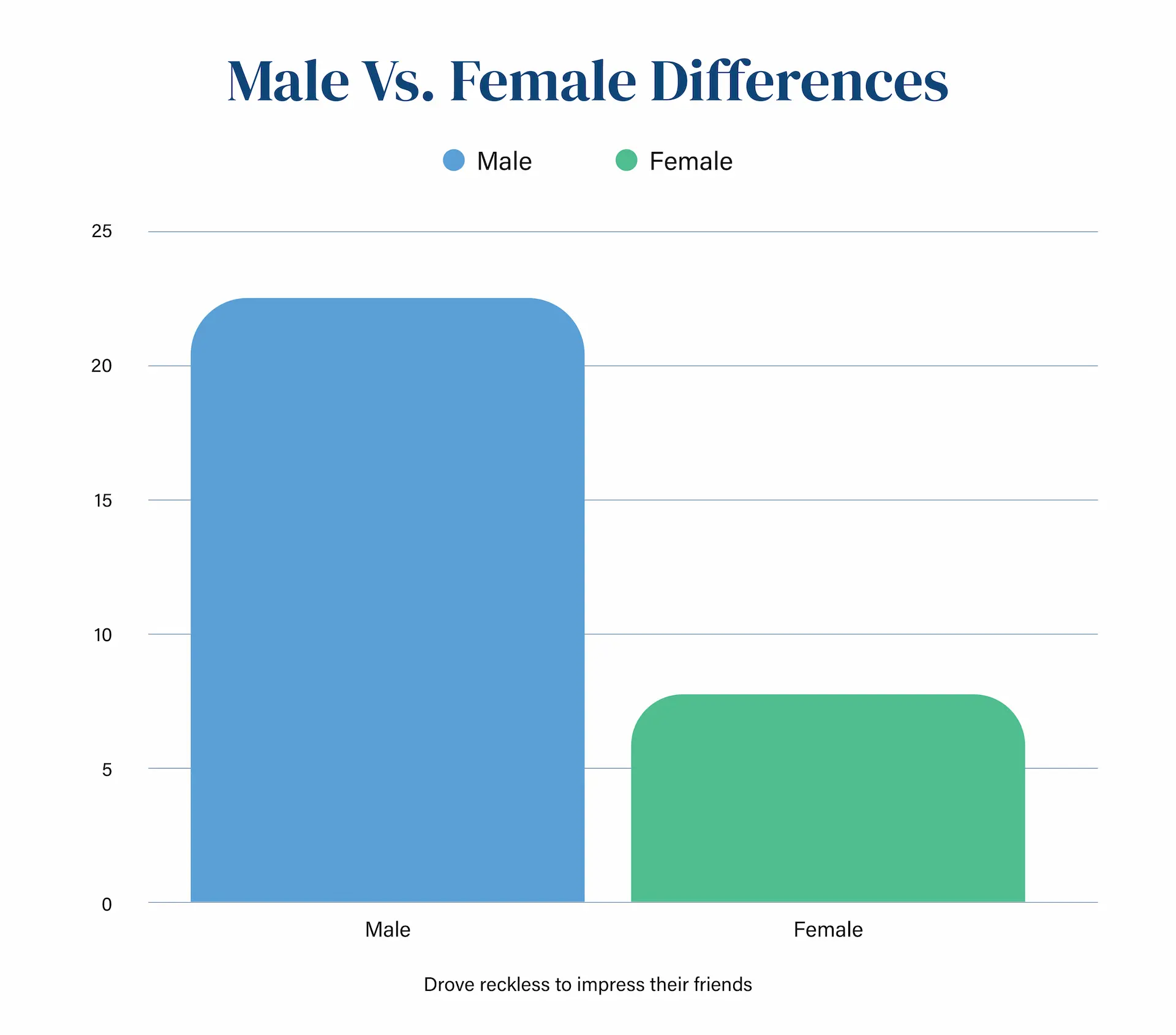
When image and peer approval enter the equation, the stakes rise — especially for young male drivers.
- 20% of teens admit to not wearing a seatbelt in the front seat — a statistic that’s both avoidable and alarming.
- 78% of teens report driving with other teens in the car without an adult present — a practice that’s illegal in some states for inexperienced drivers.
These behaviors may seem harmless in the moment, but they significantly increase the chances of fatal accidents, especially for inexperienced drivers.
The gap between perception and reality is wide — but it doesn’t have to stay that way. By understanding what teens are really facing on the road and how they view their own habits, parents can engage in more effective, honest conversations. Awareness is the first step toward safer driving for everyone.
Teen Driver Safety Checklist: 12 Habits To Build Behind the Wheel
Having good driving habits helps all drivers stay safe and protect those around them from auto accidents. Go over this pre-driving checklist with your teen to give them the information they need to stay safe every time they’re driving, whether they are close or far from home.
Here are 12 habits to develop before they head out on their own:
- Silence your cellphone: Before starting the car, put your phone into “do not disturb” mode to prevent distracting texts and calls while driving. Move the phone somewhere you can’t pick it up without first pulling over, like the back seat or passenger glove box.
- Wear a seat belt: Seat belts should be strapped across the shoulder and around the pelvis, holding you across the bony parts of the body. In a collision, the seat belt spreads out the force of the impact, helping reduce the force your body absorbs.
- Limit passengers: Inexperienced drivers, in particular, can easily get distracted by other passengers in the vehicle. Because of this, state law often restricts who new drivers can drive with. For example, in Massachusetts, new drivers under 18 may not drive with another passenger under 18 unless accompanied by a person over 21with a valid license and at least a year of driving experience who sits in the front seat.
- Avoid driving late at night: Late-night driving might sometimes be necessary, but try to limit driving after dark when you’re still learning how to handle a vehicle. It can be harder to see at night, increasing the chances of a crash. Drivers with a Junior Operator License may not drive unaccompanied between 12:30 a.m. and 5:00 a.m. in Massachusetts.
- Keep your eyes on the road: Getting distracted and looking away from the road for even a few seconds can lead to a crash. It’s important not to “rubberneck” at things happening around or inside the vehicle and instead always focus on what’s happening in front of you.
- Leave space between vehicles: Tailgating can lead to rear-ending. To avoid it, follow the simple “three-second rule,” leaving at least three seconds of space between your vehicle and the vehicle ahead. To determine that gap, pick a marker ahead of the vehicle in front of you. After it passes that marker, count to three. You should not reach the marker before you say “three.”
- Turn down the music: While not always the case, music can adversely affect drivers. Choosing the appropriate music, like slower classical or easy listening, can help improve your driving, while faster music can provoke more aggressive driving.
- Avoid showing off for others: Racing, revving your vehicle, and other forms of showboating aren’t a great idea and can distract you from what you really need to be doing on the road: watching out for other traffic, pedestrians, and cyclists.
- Stay defensive: Defensive driving means you’re always watching for other drivers to make mistakes. Mistakes inevitably happen, but if you’re always paying attention, you have a better chance of slowing down, speeding up, or moving out of the way.
- Avoid driving when tired: When you’re tired, you are more prone to getting into a crash. Your response time may be reduced, and if you start to nod off, you could miss signs of trouble and end up in a collision.
- Get familiar with directions: A GPS is fantastic for getting you where you need to go, but you don’t want to spend all your time looking at a screen and away from the road. Get to know the street names and locations of the places you go most often so you can drive without needing directions whenever possible.
- Stick to the speed limit: Speed limits are established for safety reasons. Observing the speed limit reduces the likelihood of a serious or fatal crash and allows you to adequately control your vehicle and stop in time if trouble is ahead.
Parents: What is one tip about driving as a young adult that you can share from your own learned experience?
Tips for Parents: How To Encourage Safe Driving Habits
Encouraging safe driving habits starts at home. Parents can do the following to support positive driving habits.
Set Clear Rules With Consequences
According to the Centers for Disease Control and Prevention, teens between the ages of 16 and 19 have crash rates three times higher than those over 20. Set rules with consequences for your children. Establish what will happen if you see them participating in bad habits, such as texting and driving, and follow through.
Use a Written Driving Contract
Consider having your teen sign a written driving contract. This will ensure you review with them the most important habits to maintain on the road, refreshing them on safe behaviors and hazardous conduct. If they break the rules, follow up with clear consequences.
Ride Along Regularly To Observe Behavior
While some parents feel that they don’t want to get into a vehicle with their teens, you need to be familiar with how they drive. Teaching your child good habits starts with recognizing the behaviors they need to improve on. Don’t be scared to ride along with them and advise them on better approaches when they’re behind the wheel.
Model Safe Driving Habits Yourself
When driving, model safe driving habits. It can help to repeat them out loud when your child is in the vehicle as well. For example, you could say, “I’m backing out now, and I’m looking in my mirrors and checking around my vehicle before I start moving.”
Install Tracking and Safety Apps With Mutual Agreement
Tracking and safety apps can make a difference and give you peace of mind as well. For example, your insurance carrier may want to install a tracker to see if the insured is speeding, and you can log into the app to track how well your teen has been driving.
Limit Night Driving or Add Weather-Based Restrictions
Finally, consider limiting night driving or driving in bad weather, at least until your teen has some experience under their belt. Driving at night is complicated because it’s harder to see, and poor weather reduces visibility. Try riding along with your teen at night or in different weather to see that they know what to do during downpours, at dusk when the sun is setting and more likely to be blinding, and in other possibly risky circumstances.

Common Risky Driving Behaviors in Teens
Teens are just learning to drive, but that doesn’t excuse dangerous driving behaviors. Common risky driving behaviors
include the following:
Texting behind the wheel
Driving while under the influence of drugs or alcohol
Speeding
Such actions behind the wheel put your child and others in harm’s way. Parents need to know what to look for and take steps to correct risky actions. Here are some do’s and don’ts to remember:
DO's
- Turn your phone off while you’re driving
- Follow all speed limits
- Obey curfew rules in your local area
- Ask for a ride if something doesn’t seem safe
- Check the weather before heading out on the road
DONT's
- Turn your phone off while you’re driving
- Follow all speed limits
- Obey curfew rules in your local area
- Ask for a ride if something doesn’t seem safe
- Check the weather before heading out on the road
Parents: Have you asked your teen what distractions they find the most difficult to ignore and how they can avoid getting distracted on the road?
More Resources for Young and Inexperienced Drivers
Driving is a skill that you build over time. It’s important to continue learning about driving, practice scenarios, and keep discussions about safe habits going after a teen has gotten their license.
The following resources can help a teen or an inexperienced driver better understand the law and develop the driving skills needed to avoid collisions:
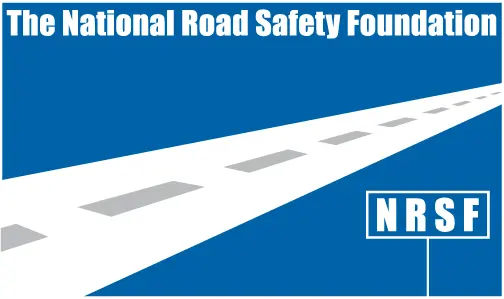
1. National Road Safety Foundation Passport: The NRSF Passport for Safe Driving is a toolkit that provides helpful driving information and tips to student drivers and those training them.

2. Driving Skills Resources – NRSF: These driving skills resources include videos showing what can happen in a severe crash, including what could happen when you’re in a collision at high speeds.

3. Advocates for Highway and Auto Safety: This roadmap report from Safe Roads includes up-to-date statistics on traffic collisions and fatalities in the United States.

4. National Safety Council Courses: NSC defensive driving courses for teen and young adult drivers help teach the skills necessary to stay safe on the road. Teens are twice as likely as drivers 20 and older to be involved in fatal crashes, but a strong background in defensive driving can make the difference in creating awareness and improving their skills.
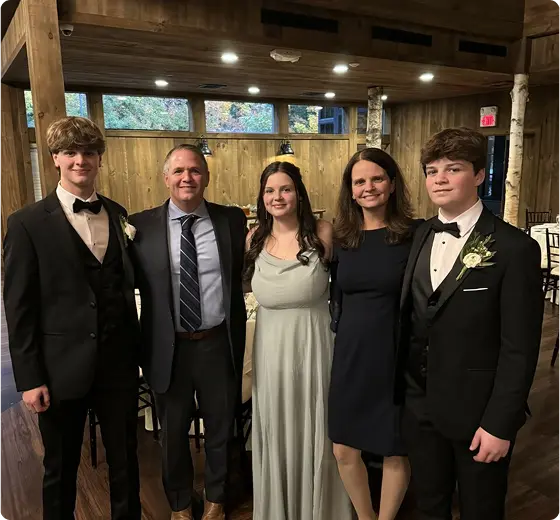
“As a father of three kids ages 20, 18, and 16, with two already driving and my youngest approaching that milestone, I live this reality every day. When my older daughter first got behind the wheel, I experienced that same mix of pride and anxiety that every parent feels. You want to give them independence, but you also know the statistics we see in our practice.
That’s exactly why we created this safety checklist. Not just as attorneys who’ve helped families after accidents, but as parents who understand that one conversation, one habit, or one moment of awareness can literally save lives.
Every time one of my kids drives away, I’m reminded that the small decisions we help them make today will protect them and other families tomorrow.” – Christopher DiBella
Safer Driving Saves Lives: Small Decisions Can Make a Big Difference
At DiBella Law, our team of personal injury lawyers have worked with numerous families to recover after life-changing collisions, many of which involved teen drivers. We strongly believe in preventing crashes through educating our youth.
Getting their driver’s license is an important freedom for teens, but it’s also one of the greatest responsibilities they’ve had in their lives. Encouraging them to make small, positive, but consequential choices behind the wheel builds better drivers and helps keep your child and others safe on the road.
Just turning off a cell phone or driving without passengers can make a difference. Parents, take time to go over our Teen Driver Safety Checklist with your teen and be open about the importance of safety—you could save lives.
If your teen does get into a crash, reach out. We are here to help, contact us online anytime.
